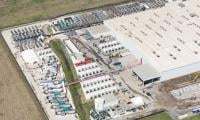Understanding CPEC
Capital suggestion
In order to understand CPEC, we must first understand China. China’s labour force stands at around 800 million and the number one national issue in China is employment. China is all about ‘state capitalism’ and the Communist Party of China (CPC). The number one issue for the CPC is employment because unemployment means social instability and the last thing the CPC wants is another Tiananmen Square (in 1989, student-led protesters demonstrated in Beijing and Premier Li Peng had to impose martial law to suppress the movement).
CPEC was drawn up by the China Development Bank (CDB) and the National Development and Reform Commission (NDRC) of China. Both the CDB and the NDRC have a mandate to safeguard Chinese interests, not Pakistan’s. To be certain, China now has excess steel, coal, cement, aluminium and flat glass capacities. Of all the steel produced in the world, roughly 50 percent is produced in China. China’s metal smelting and rolling industry employs 3.63 million workers. China’s annual steel production stands at 800 million metric tonnes while its domestic demand has plummeted to 400 million metric tonnes.
The CPC now has two choices: lay-off a million steel workers or try to export $100 billion worth of excess steel every year. Remember, unemployment means social instability and the last thing the CPC wants is another Tiananmen Square. Yes, China produces 60 percent of the global cement output. Domestic demand has gone down sharply and the CPC would have to cut roughly 390 million tonnes of cement capacity. And that would mean unemployed cement workers.
In 2014, China’s foreign exchange reserves peaked at over $4 trillion. As of May 2017, China’s foreign exchange reserves have dropped to a little over $3 trillion. For the record, the ‘Chinese government has the largest foreign exchange reserves in the world’ and China is the ‘largest official holder of US assets in the world’. Of the $3 trillion in reserves, around $2 trillion or 66 percent consist of US dollar-denominated assets, mostly US Treasury securities and some US corporate bonds. Of the $3 trillion in reserves only $74 billion or a mere 2.5 percent are held in the form of gold.
For the record, China’s $2 trillion investment in US Treasury securities earns anywhere from 1.13 percent on a one-year treasury to a high of 2.98 percent on 30-year treasury securities. Just compare those earnings to what China will be earning by investing in the Sahiwal Coal Power Project: the guaranteed rate of interest on the debt component is LIBOR plus 4.5 percent.
In effect, the Chinese loan to the Sahiwal Coal Power Project bears an interest rate of 6.21 percent (as the current one-year LIBOR is at 1.71 percent). Additionally and amazingly, the China Export and Credit Insurance Corporation will charge an insurance premium of 7 percent (even though the GoP has guaranteed to purchase electricity that will be generated). Imagine: the Chinese will be earning 13 percent in the first year as opposed to 1.13 percent on US Treasury securities.
On top of that, the return on equity in the Sahiwal Coal Power Project “shall be 27.2 percent” (according to Nepra) and the return on equity in the 1,320MW Thar Coal Power by the Shanghai Electric Power shall be 34.49 percent (according to Nepra). For the record, these dollar-denominated, government of Pakistan- guaranteed rates must be among the highest in the world and an entrepreneur’s dream come true.
A recently revealed 231-page document lists five risks: Pakistan’s “competing political parties (read: multiparty democracy), religion, tribes, terrorists and Western intervention”. Then there are train-loads of ‘surveillance equipment’ and Chinese law-enforcement personnel to ‘protect Chinese companies’.
Not to forget that China and Pakistan are at number 76 and 116 out of 176 countries on the Corruption Perception Index respectively. Unfortunately, corruption at both ends is translating into inflated capital costs of CPEC projects.
The writer is a columnist based in Islamabad.
Email: farrukh15@hotmail.com Twitter: @saleemfarrukh
-
 Piers Morgan In Hospital: Here's Why
Piers Morgan In Hospital: Here's Why -
 IPhone 18 Pro Leaked: New Design Reveals Radical Corner Camera Layout
IPhone 18 Pro Leaked: New Design Reveals Radical Corner Camera Layout -
 Kung Fu Legend Siu-Lung Leung Passes Away At 77
Kung Fu Legend Siu-Lung Leung Passes Away At 77 -
 Kim Kardashian To Remove Ex Kanye West From Her Kids' Names
Kim Kardashian To Remove Ex Kanye West From Her Kids' Names -
 Queens Mother Arrested After Abducting Child From Court-ordered Visit
Queens Mother Arrested After Abducting Child From Court-ordered Visit -
 Sarah Ferguson Ready To ‘spread Her Wings’ After Separating From ‘disgraced’ Andrew
Sarah Ferguson Ready To ‘spread Her Wings’ After Separating From ‘disgraced’ Andrew -
 Finn Wolfhard Shares How Industry Views Him Post 'Stranger Things'
Finn Wolfhard Shares How Industry Views Him Post 'Stranger Things' -
 Dylan O'Brien Gets Nostalgic After Reunion With Old Friend
Dylan O'Brien Gets Nostalgic After Reunion With Old Friend -
 UK Doctors Warn Screen Time Is Harming Children’s Health
UK Doctors Warn Screen Time Is Harming Children’s Health -
 Meghan Markle To Get Police Protection In UK If Travelling With Archie, Lilibet
Meghan Markle To Get Police Protection In UK If Travelling With Archie, Lilibet -
 Spencer Pratt Expresses Hope For Taylor Swift, Travis Kelce's Wedding Invite
Spencer Pratt Expresses Hope For Taylor Swift, Travis Kelce's Wedding Invite -
 Evan Peters Makes Unexpected Confession About 'American Horror Story' Season 13
Evan Peters Makes Unexpected Confession About 'American Horror Story' Season 13 -
 Kentucky Grandmother Arrested After Toddlers With Broken Skulls, Ribs
Kentucky Grandmother Arrested After Toddlers With Broken Skulls, Ribs -
 European Space Agency Hit By Cyberattack, Hundreds Of GBs Data Leaked
European Space Agency Hit By Cyberattack, Hundreds Of GBs Data Leaked -
 Elon Musk’s XAI Launches World’s First Gigawatt AI Supercluster To Rival OpenAI And Anthropic
Elon Musk’s XAI Launches World’s First Gigawatt AI Supercluster To Rival OpenAI And Anthropic -
 Google Adds On-device AI Scam Detection To Chrome
Google Adds On-device AI Scam Detection To Chrome



